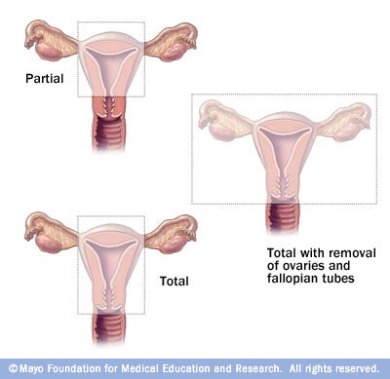
There are lots of things that you learn about when you decide to go in for a hysterectomy. Unfortunately, some of these things are only learned after we actually went through the surgery. For me, one of those things was about anesthetic. I had ‘been under’ twice before – once for removal of tonsils and once for removal of wisdom teeth – wow, doctors apparently really like taking things out of my body!). I knew I always woke up very nauseated and both previous times I threw up in short order – something I really wanted to avoid right after a hysterectomy! Well, apparently, it was not the anesthetic but the codeine that made me sick. I had no codeine this time and woke up feeling pretty good. However, what I did have was a sore throat and no idea why. This post from the Mayo Clinic explains why. It was from the tube they inserted in my throat while I was under. It was fairly minor overall, but just one of those things that I didn’t learn until after it actually happened. Hopefully this post will help you be a little more prepared for these effects than I was!
From the Mayo Clinic: http://www.mayoclinic.com/health/anesthesia/MY00100/DSECTION=what-you-can-expect
Before general anesthesia
Before you undergo general anesthesia, your anesthesiologist will talk with you and may ask questions about:
- Your health history
- Your prescription medications, over-the-counter medications and herbal supplements
- Allergies
- Your past experiences with anesthesia
The information you provide will help your anesthesiologist choose the medications that will be most appropriate and safe for you.
During general anesthesia
In most cases, your anesthesiologist delivers the anesthesia medications through an intravenous line in your arm, but sometimes the anesthesia may be given as a gas that you breathe from a mask. For example, children may prefer to go to sleep with a mask.
Once you’re asleep, a tube may be inserted into your mouth and down your windpipe to ensure you get enough oxygen and to protect your lungs from blood or body secretions, such as from your stomach. You’ll be given muscle relaxants before doctors insert the tube, to relax the muscles in your windpipe. In some cases this breathing tube isn’t needed, which reduces your chance of a sore throat after surgery.
Your doctor may use other options, such as a laryngeal airway mask, to help manage your breathing during surgery.
A member of the anesthesia care team monitors you continuously during your procedure, adjusting your medications, breathing, temperature, fluids and blood pressure as needed. Any abnormalities that occur during the surgery are corrected by administering additional medications, fluids and, sometimes, blood transfusions.
Blood transfusions may be necessary in some situations, such as complex surgeries. Anesthesiologists and other members of the anesthesia care team monitor your condition and deliver blood transfusions when necessary. However, blood transfusions may involve risks, particularly in people who are older, who have low blood red cell volume or who are undergoing complex heart surgeries.
After general anesthesia
When the surgery is complete, the anesthesia medications are discontinued, and you gradually awaken either in the operating room or the recovery room. You’ll probably feel groggy and a little confused when you first awaken. You may experience common side effects such as:
- Nausea
- Vomiting
- Dry mouth
- Sore throat
- Shivering
- Sleepiness
- Mild hoarseness
You may also experience other side effects after you awaken from anesthesia, such as pain. Side effects depend on your individual condition and the type of surgery. Your doctor may give you medications after your procedure to reduce pain and nausea.





